Smartphones come and go, but every once in a while there is that "one" which either has some really unique specs, is priced really well, has everything you want or just looks nice. Sometimes it's a combination of all of those. I've been interested in the JiaYu S3 since it was first announced, and after playing with it for the last couple of weeks I don't think I'll ever go back to a Galaxy, iPhone, or anything else. The JiaYu S3 comes in two variations: one with 2 GB of RAM and another with 3 GB of RAM, and the 3 GB version also comes with NFC support. In this review, I'll be reviewing the 3 GB + NFC version.
Design
The JiaYu S3 measures in at 152mm x 75.6mm x 9.1mm. It's certainly not the thinnest phone out there, but all of the sides curve off to the edges making it feel significantly thinner and comfortable in the hand. In this way it reminds me a lot of the Moto G which, was also thicker than average but was still designed in a way that made it feel significantly thinner. It has a very minimalist design with no markings on the front of the phone besides the capacitive buttons on the bottom.

On the top you will find a single 3.5mm headphone jack and a microphone, and on the bottom you will find a micro-USB port and another microphone. The top microphone is used to cancel out noise, and the bottom microphone is used to take in the user's voice. There are no markings of any kind on the left, and on the right of the phone you will find the "off" button and the volume rocker.
Click to enlarge. Left: top of the phone, right: bottom of the phone. You take the back cover off by jamming your nail into that gap on the left side of the bottom of the phone and pulling it off.
On the rear of the smartphone there is the 13 MP camera, followed by a dual LED flash, and moving to the bottom there is a silver JiaYu logo followed by the speaker grill. The rear housing is a slippery plastic which I wasn't too fond off at first, but it was grippy enough so that it wouldn't fall out of your hand and slippery enough such that it wasn't a chore to take it out of your pocket when you needed to.

What appears as two black strips is actually the two loudspeakers.
Opening the phone's back housing we find the bright green (removable) 3050 mAh battery. We also find the SD-card slot and two SIM-card slots -- yes, it's a dual-SIM phone. The cover of the back housing is also home to the NFC transmitter. Moving to the bottom we see the two separate stereo loudspeakers.
Display
The 5.5" LTPS IPS display has a more than adequate 1080p resolution, which gives it 401 pixels per inch. The contrast is a bit of a concern at first -- it's nowhere near as deep as some of the better panels out there, but that is only really noticeable by comparison when placing it next to another, better-calibrated panel. This is with the default settings at least, as what I found while going through the settings sort of blew me away.

While going through the display settings, I found an option called "MiraVision" which allows the user to have fine grain control over the phone's display, including over the contrast, brightness, saturation, sharpness and color temperature. After going through and spending about five minutes to calibrate it, the display became significantly better. The blacks on the display are very deep and the display brightness also puts up a good fight in very strong sunlight.
The display itself is covered with Corning Gorilla Glass 3 which should make it fairly tough as well.
Performance
Specs
My model of the JiaYu S3 has 3 GB of RAM and the 64-bit eight-core MT6752 chipset clocked at 1.7 Ghz. All eight cores are based on the ultra-low power ARM Cortex-A53 design. A lot of people were disappointed with Mediatek's first generation of eight-core chips, specifically in the MT6592, but they've since come a long way in both design and power. Based on Mediatek's in-house developed processor core management system, it allows all of the cores -- barring one -- to be switched off when they're not needed. When they are needed, they switch on immediately and there is no stutter or slowing down. The cores themselves don't have the best single-core performance as Qualcomm or Samsung's offering, but their multi-core results blow everyone else out of the water as the benchmarks will show.

Left to right, we see the mini-SD slot, the first SIM slot, and then the second SIM slot. Above the second SIM are the two pins for the NFC module on the rear cover.
The SoC itself technically falls into Mediatek's "midrange" category, although their next-gen high-end SoC still hasn't been released.
Some of the other specs not mentioned so far include NFC support, support for a number of LTE bands (check if yours is supported against those listed here), Bluetooth 4.0, and so on. It also has a dedicated notification light. I'll cover the camera later in the review, but it has the highly desired 13 MP Sony IMX214 you find the Nexus 6 and OnePlus One. It only has 16 GB of internal storage, and about 12.5 GB of that is available, but the phone is mini-SD expandable.
Benchmarks
The benchmarks it has are similar to last year's flagships, with 40,156 on AnTuTu and 10,619 on 3DMark. It's worth mentioning at this point that the device runs Android 4.4.4 KitKat, so when a Lollipop update comes along (within the next few weeks) these scores should increase by at least 10%.
Gaming
Asphalt 8 plays at the highest graphics setting with no stutter at all. Scenes are fluid, transitions are smooth, and there are no graphics glitches or anything along those lines. Plants vs Zombies 2 also played fine, and Modern Combat 5 also showed high performance. This is one of the things I usually have an issue with on Mediatek SoCs: the GPU, but in this case it was more than sufficient. You can't really game if there is less than 15% of the battery left, though, as it throttles the GPU to conserve energy. It makes everything extremely laggy. I'm not sure if there is a toggle somewhere to prevent this, but there probably is.

Android OS
The OS is a modified version of Aliyun OS which in turn is a heavily modified version of Android 4.4.4 KitKat. It's still Android in every sense of the word, however, and has normal support for everything from the Play Store through to various Xposed Framework modules. The stock launcher and various other elements of the phone are a bit far away from what you'd expect on a stock phone and it makes the OS itself somewhat interesting: it came with a Settings menu toggle to root the phone. Yeah, you read that right, you can literally root the phone by hitting a toggle in the Settings menu. I loved how easy this was and became agitated when I realized not many, if any, other manufacturers do this. Manufacturers: please do this more often. It makes everyone's life significantly easier and puts control back into the hands of the user.
The JiaYu S3 comes with a number of different themes and widgets which change everything from the menu designs down to the functionality of individual apps and their icons -- a user can achieve the stock Android KitKat experience with just a few button presses, or theme the entire phone just as quickly. Personally, I'm a fan of the Google Now launcher, so I'm using that over the stock launcher. Either way, the options are there to make it whatever you wish and in this case it's very customizable.
Left: stock launcher, middle: Settings menu with Superuser toggle, right: unintelligible warning given about rooting your phone.
There is a "swipe from the bottom" menu which allows the user to quickly change the brightness and disable things like Bluetooth and WiFi, and the "swipe from the top" notifications menu and toggles are all there as you'd expect.
Although it only has KitKat, it will be getting Android 5.x in the next month or so (there is already a beta floating around).
Bloatware
The bloatware it comes with is dependent on what variation of the ROM you get. Mine was shipped with the Chinese version, so I received all sorts of Chinese bloat that I couldn't read and was barely able to understand what they were from the context of the app layouts. I assume that one was some sort of Chinese Spotify, another was some sort of Chinese Facebook, and I think there was a Weibo app.
Left: focused on the closest leaves of the chilli plant, right: focused on the wall about eight feet behind it
The Chinese ROM doesn't support Google Play Services, however, regardless of what you might have been told or what reseller videos try to show. If your JiaYu S3 doesn't come with Google Play Store out of the box, then you're going to have to flash it to the international ROM. You can't sideload the APK or use any type of fancy installer to get around it -- the outcome will be that nothing will sync and things will crash randomly.
I flashed the international ROM on mine and the bloat was the basic Google bloat, with a few extra widgets here and there. Nothing notable or excessive.
Battery
The JiaYu S3 has a battery marked "3000 - 3100 mAh", which I average to 3050 mAh. It's definitely a multi-day phone for the light user, and an all-day phone for the heavy user. Charging the phone isn't the easiest thing to do, however. In my experience so far, it takes about three to four hours to fully charge the battery -- extremely slow. There also seems to be some sort of firmware issue with the battery level not being accurately reported in the OS. This is a common issue with Mediatek phones, though, and restarting the phone (which takes around 15 seconds -- pretty quick) usually puts it back at the right level for a few hours.
There may be a way to calibrate the battery to fix it on an application level, but this issue didn't affect me enough to be a problem; it was more of an observation than something that was at all hindering.

Camera
The camera on the JiaYu S3 is a bit of a hit-or-miss. With the right lighting it captures some amazingly detailed photos, but at night with little lighting it's a grainy mess. You need a stable hand as the Sony IMX 214 doesn't have OIS, but once it focuses in (and stays focused) you'll get some wonderful photographs out of it.
Perhaps the biggest issue with the phone is actually the video recording: it's so bad I'm assuming there is a firmware bug affecting it. 1080p video recording looks more like 240p scaled up with extra grain with a post-processed HDR effect. Well, it's not that bad, but it's close.
The issues with the video recording are almost certainly software based, and we will likely see an update that corrects it in the near future. The IMX 214 is what has been used in some of the phones with the best cameras (such as the Vivo Xshot) so I'm sure the issues can and will be corrected.
Accessories
This is one area where the JiaYu lacks considerably: it comes with pretty much no accessories outside of the charger and data cable. Where most companies would include headphones or even screen protectors, the JiaYu S3 doesn't come with either, so you'll have to buy your own. Fortunately, there are good cheap headphones out there and screen protectors for the JiaYu S3 are availible from whatever reseller you'd buy it from.

Final thoughts
The JiaYu S3 has completely changed my perception on how much I'm willing to pay for a smartphone. After using the $200 JiaYu S3, I can honestly say that I don't plan on paying more than $250 for a smartphone ever again -- not unless we go through some significant technology shift that justifies it. This phone has everything I ever expected and more, with specs that are just on the horizon of diminishing returns. Yes, 1440p might be nice, and 4 GB of RAM is really good too. But at this point, either of those features will bump the total cost to almost double what the JiaYu S3 costs, making it too expensive to be reasonable. The JiaYu S3 is even being updated more often than some of the more well known brands, with at least four OTA updates since it was released just a few months ago. It only has Android KitKat for now, but that has been more of a Mediatek delay than a JiaYu delay, and JiaYu have confirmed that they're working on a stable Lollipop release.
I can't think of a phone that has a better bang-for-buck ratio than the JiaYu S3. In fact, I'll be solidifying that belief by going out and buying four three of them (yes -- three!) in the next week or so: my friends are all interested in low cost upgrades, and this fits the bill and then some. The dual speakers are extremely loud, the phone is well supported, the display is bright, clear and in high definition. It has a notification light, dual LED flash, and an all-day battery. There are also plenty of third party ROMs if I ever get bored with what JiaYu offers, so the selection is definitely there.

This photo was taken at night with faint lighting and no flash.
Comparing it to other phones in this price bracket (and using the same SoC) helps confirm my thoughts. The Zopo ZP920 only has 2 GB of RAM and a smaller 5.2" screen, as well as a much smaller 2300 mAh battery. The Meizu M1 Note has an inferior Samsung camera, 2 GB of RAM and no NFC support, although it does have dual-tone flash and a "cleaner" OS. The only real contender at this stage is the Elephone P7000, but that isn't out yet and likely won't be out for a few more months.
Comparing this to more mainstream brands, there is the Asus Zenfone 2, Moto G or HTC Desire 510 - all of which are inferior in a number of ways (camera, screen resolution, screen size, SoC performance, RAM, single speaker). Even the mainstream brands with Mediatek SoCs (like the Sony Xperia E4g) still don't come close to the S3. The closest phone to the S3 might be the Ulefone Be Touch, which has the trade off of being $20 more expensive and only having a 720p screen, but having the addition of a fingerprint scanner -- in my opinion, it's not worth it. But if a fingerprint scanner is worth having a worse screen resolution and being slightly more expensive then that's up to you.
All in all, for this price, I can't see any phone that puts up a real fight in May 2015. The sub-$200 price tag makes things like the video recording quality and battery charging speed significantly easier to digest, especially as at least the former will probably be fixed with a software update in the near future.
There is only one real catch, and that's to do with American bands. While most of us in Asia, Africa and Europe shouldn't struggle much with band support, those in the Americas might. Check out the official JiaYu S3 page to see if your carrier's bands are supported. That's the price you pay for freedom, I suppose.
A big thank you to our friends at Gearbest who supplied the device for this review. If you are interested in picking up one of these phones, Gearbest has the device available for sale at $184.49 for the 2 GB variation and $199.89 for the 3 GB and NFC version with free shipping if you use the coupon "JYS3". Gearbest informed me that this coupon will be active until some time in June 2015.






















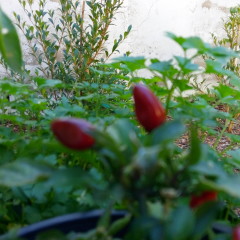


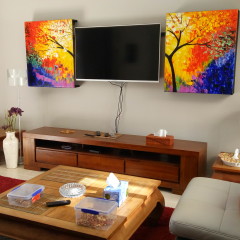




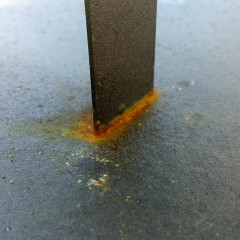

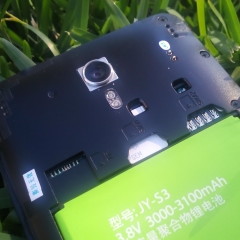

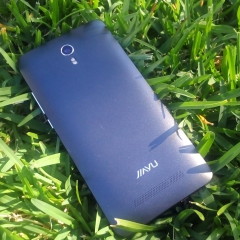
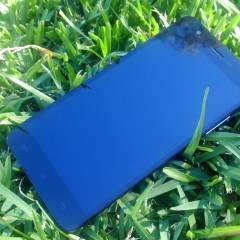
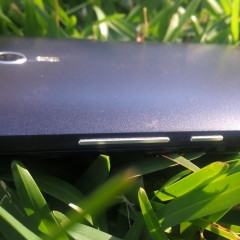
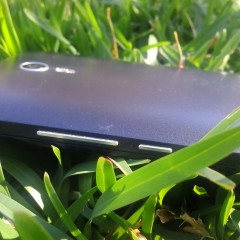

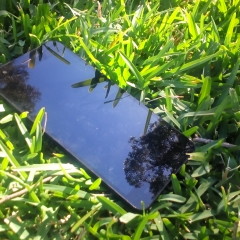
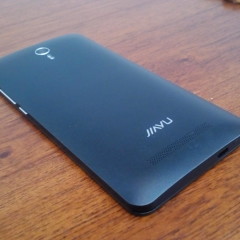
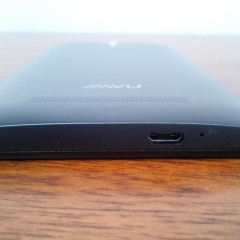
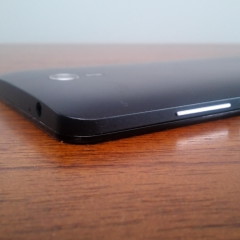
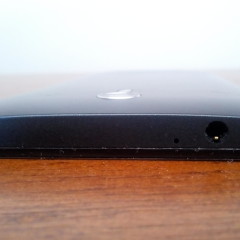









18 Comments - Add comment